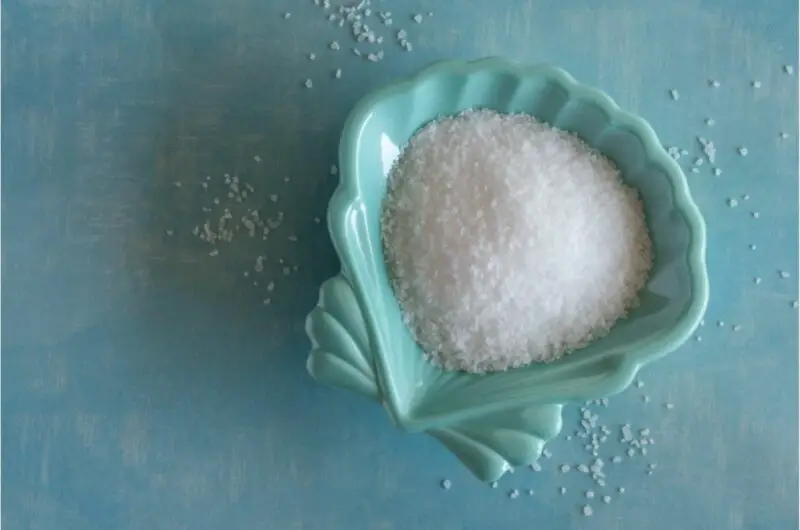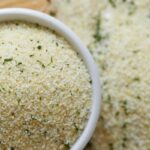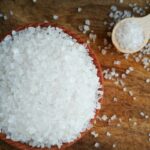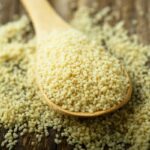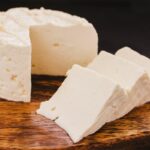Kosher salt is a type of salt that has large, coarse grains. Though the salt has been used for hundreds of years, it’s a favorite among modern cooks today, thanks to its capacity to add flavor to dishes.
Kosher salt is different from table salt, as the latter contains iodine. This can give dishes a slightly bitter taste, which is why kosher salt is often preferred by chefs and cooking enthusiasts.
Kosher salt is one of the best kinds of salt to use in recipes, but if you have run out in the middle of making a recipe, there are some substitutes you can use in its place.
We’ve listed 6 of the best kosher salt substitutes below. Some of these are common ingredients that you may have in your kitchen already, while others are less common, but are normally found in grocery stores.
Keep reading to find out more about kosher salt and its possible alternatives!
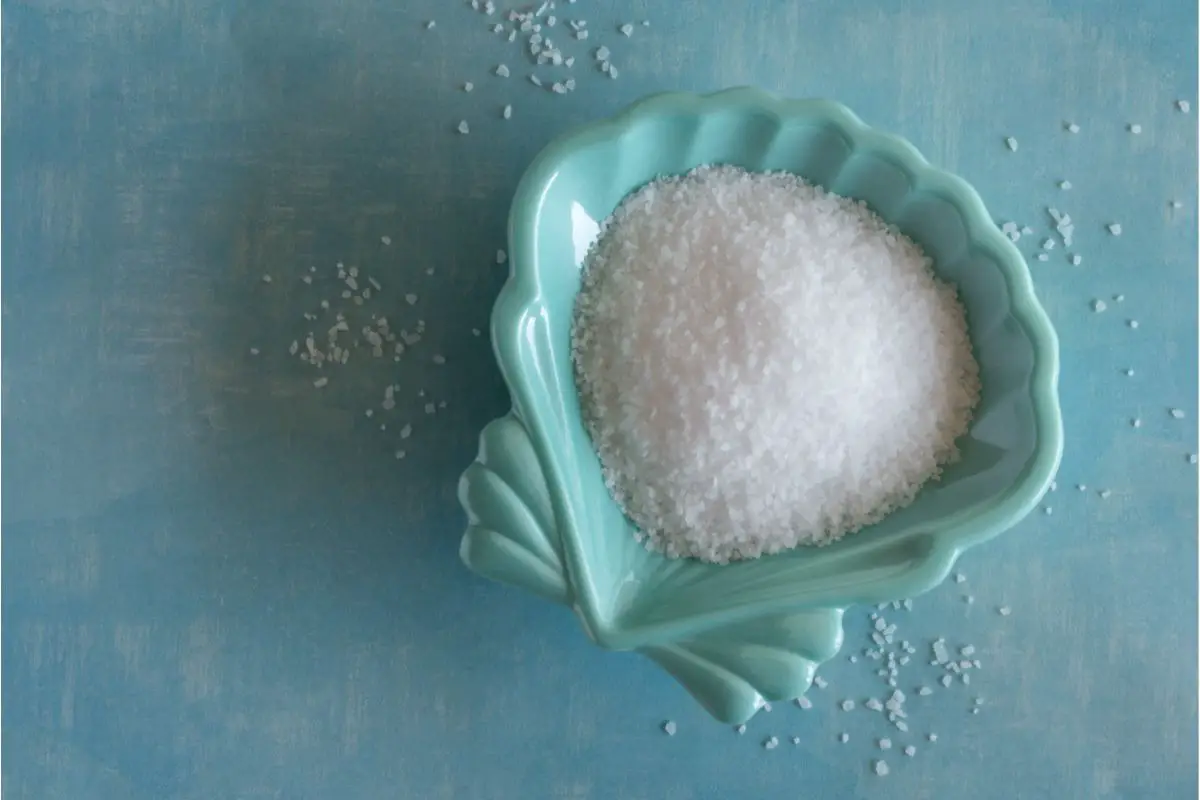
Kosher Salt: The Basics
Kosher salt is made from big, gritty, and flaky salt grains that have been sourced from natural salt origins.
Its name comes from its historic uses, as it was used in koshering processes. The salt’s bigger grains extract moisture from the meat at a fast rate.
As part of the Jewish faith, eating meat that contains blood is forbidden. Koshering would remove blood, along with any excess moisture, from meat, making it suitable for Jewish people to consume.
Some brands add certain ingredients to the salt, like minerals that improve its consistency and flavor.
Kosher salt is used in many cuisines, including Middle Eastern, Indian, and Jewish dishes. People in the United States also use it for cooking purposes.
As it’s free from iodine, kosher salt tastes less bitter compared to table salt, which is why many households use it as their regular everyday salt.
Best Substitutes For Kosher Salt
Now that you know more about kosher salt, here are some substitutes you can use in its place.
1. Coarse Sea Salt
Sea salt is derived by using methods to evaporate seawater. Its flavor and appearance resemble kosher salt, which makes it one of the best kosher salt alternatives.
Both types of salt have gritty, larger grains compared to other salt varieties. Coarse sea salt also has a lighter texture that’s ideal for garnishing dishes.
It tastes just like kosher salt, though kosher salt is slightly thicker and less processed than sea salt.
If you are using sea salt in place of kosher salt, you can substitute it in a 1:1 ratio. For instance, if you would have used a teaspoon of kosher salt in a recipe, swap it for a teaspoon of sea salt.
Sea salt is a little less coarse compared to kosher salt, so it will dissolve in recipes faster. You can avoid over-salting your food by adding the sea salt later than you would have originally done.
2. Fleur De Sel
Another worthwhile substitute for sea salt is fleur de sel. This is a sea salt variety that has a light, flaky consistency and a briny, ocean flavor.
The salt is sourced by hand collecting sea salt grains from French coastal areas, which explains the salt’s name. These grains are packed and sold after being sundried for roughly three months.
Fleur de Sel is a lot more expensive than coarse sea salt, so it’s best saved for garnishing or sprinkling over dishes.
Fleur de sel has a fragile form that melts in the mouth easily. When you use it as a finishing salt, the ingredient heightens flavors within soups, seafood, salads, meats, and desserts.
Kosher salt is saltier than Fleur de Sel, so you may need to use more of the latter to use as a substitute.
To begin with, substitute every 1 ¼ teaspoon of kosher salt for a teaspoon of fleur de sel. Taste the dish and add a little more if desired.
3. Himalayan Pink Salt
As the name implies, Himalayan pink salt has a noticeable pink hue that makes this ingredient stand out. Its pink color is the result of minerals within the salt.
These include potassium, calcium, and magnesium, which are present in rock crystals near the Himalayan mountain range.
Himalayan pink salt is used for a variety of purposes, like seasoning food, garnishing meals, rimming alcoholic drinks, and curing meat. You can also find it being used in salt block ice creams, as the salt gives the dessert a strong, distinctive flavor.
As the salt contains different minerals, the salt has a different flavor profile than kosher salt. It has complex notes with a gentle salty taste.
Nevertheless, both Himalayan pink salt and kosher salt have similar gritty grains, so you can use a 1:1 ratio to substitute.
4. Table Salt
A staple household ingredient that’s used in many culinary settings, table salt is affordable and easy to obtain. The ingredient gives dishes their classic salty flavor.
Table salt is also important for use in baking as its fine consistency dissolves easily. This means that you won’t notice clumps of salt inside your baked goods.
Compared to all of the varieties, table salt has very fine grains, making it the most tightly packed, dense, and salty type of salt.
Table salt is also iodized, which means that it contains hints of potassium iodide or sodium iodide. This gives the salt a metallic flavor and a saltier flavor.
As table salt is a lot saltier compared to kosher salt, you won’t need as much to substitute for it.
Use between ¾ and ½ teaspoons of table salt for each teaspoon of kosher salt. This essentially divides the amount in half, based on how large the flakes are.
5. Pickling Salt
Otherwise known as preserving or canning salt, pickling salt can also work well as a kosher salt alternative.
Similarly, kosher salt also works well for pickling purposes. Both types of salt are exchangeable, as neither one contains additives, like iodine or anti-caking agents.
Pickling salt and kosher salt do have different looks, but both of their flavor profiles are relatively similar. If you’re making a recipe that doesn’t need kosher salt’s classic flaky consistency, pickling salt works well as a substitute.
To use this salt alternative, substitute each teaspoon of kosher salt for between 1 ¼ and 1 ½ teaspoon of pickling salt.
6. Soy Sauce Or Fish Sauce
Though soy sauce is loved by many, a lot of people aren’t keen on its interesting flavor. If you’re not a fan of soy sauce but have a bottle lying around in your kitchen, you can use the condiment as a kosher salt substitute.
Soy sauce’s traditional salty flavor is the result of its high sodium content. You’ll need to use soy sauce frugally, as there are roughly 920 milligrams of sodium in just one tablespoon.
Soy sauce is also ideal when preparing marinades for meat. The sauce is liquid, so it doesn’t need to be dissolved first before preparing the meat.
You can apply the soy sauce in an even coating, or mix it with other ingredients to make a flavorful marinade. Fish sauce isn’t as popular as soy sauce, but it’s another salty dressing that can work in place of kosher salt.
You won’t need much of these sauces to substitute for kosher salt. A typical rule is to swap every teaspoon of kosher salt for two teaspoons of soy sauce (or fish sauce).
If you do use one of these two sauces, take care not to oversalt your dishes. Keep tasting as you make the recipe and only add the sauces a little at a time.
Final Thoughts
Kosher salt is one of the best types of salt to use in cooking, but if you run out while making a certain recipe, there are other ingredients you can use in its place.
Just remember to be careful when adding each substitute. Some, like coarse sea salt, can be used interchangeably with kosher salt. However, others, like soy sauce, are particularly salty, so you’ll need a lot less in your recipe.
Always taste your food as you go and be careful when adding your kosher salt substitutes. It’s easier to add salt to a dish than take it away!
Frequently Asked Questions
Can I Replace Kosher Salt With Regular Salt?
What Is The Closest Salt To Kosher Salt?
Each type can be used to rim cocktails, marinate meat, and sprinkle on salads. As they are so similar in size and flavor, you can use both types of salt interchangeably.
What’s The Difference Between Kosher Salt And Regular Salt?
As it can be loosely sprinkled over dishes, its flavor isn’t as salty compared to table salt, and vice versa.
The 6 Best Substitutes For Kosher Salt
Course: Substitutes4
servings30
minutes40
minutes300
kcalKosher salt is a great ingredient that can enhance flavors in a dish. If you’ve run out, here are the best kosher salt substitutes to use in your recipes.
Ingredients
Coarse Sea Salt
Fleur De Sel
Himalayan Pink Salt
Table Salt
Pickling Salt
Soy Sauce Or Fish Sauce
Directions
- Decide on what substitute you need
- Pick a substitute from the list above
- Read what you need to substitute with
- Create the recipe and enjoy
Recipe Video
https://youtu.be/xMm-8JejByAVideo can’t be loaded because JavaScript is disabled: How to substitute kosher salt and table salt (https://youtu.be/xMm-8JejByA)- Author
- What Exactly Do Chickpeas Taste Like? Is There A Distinct Flavor? - September 30, 2023
- Top 11 Low Carb Options at Sonic Drive-In for Keto Diet - September 30, 2023
- What Should You Serve Alongside Potato Salad? 8 Incredible Side Dishes - September 30, 2023

